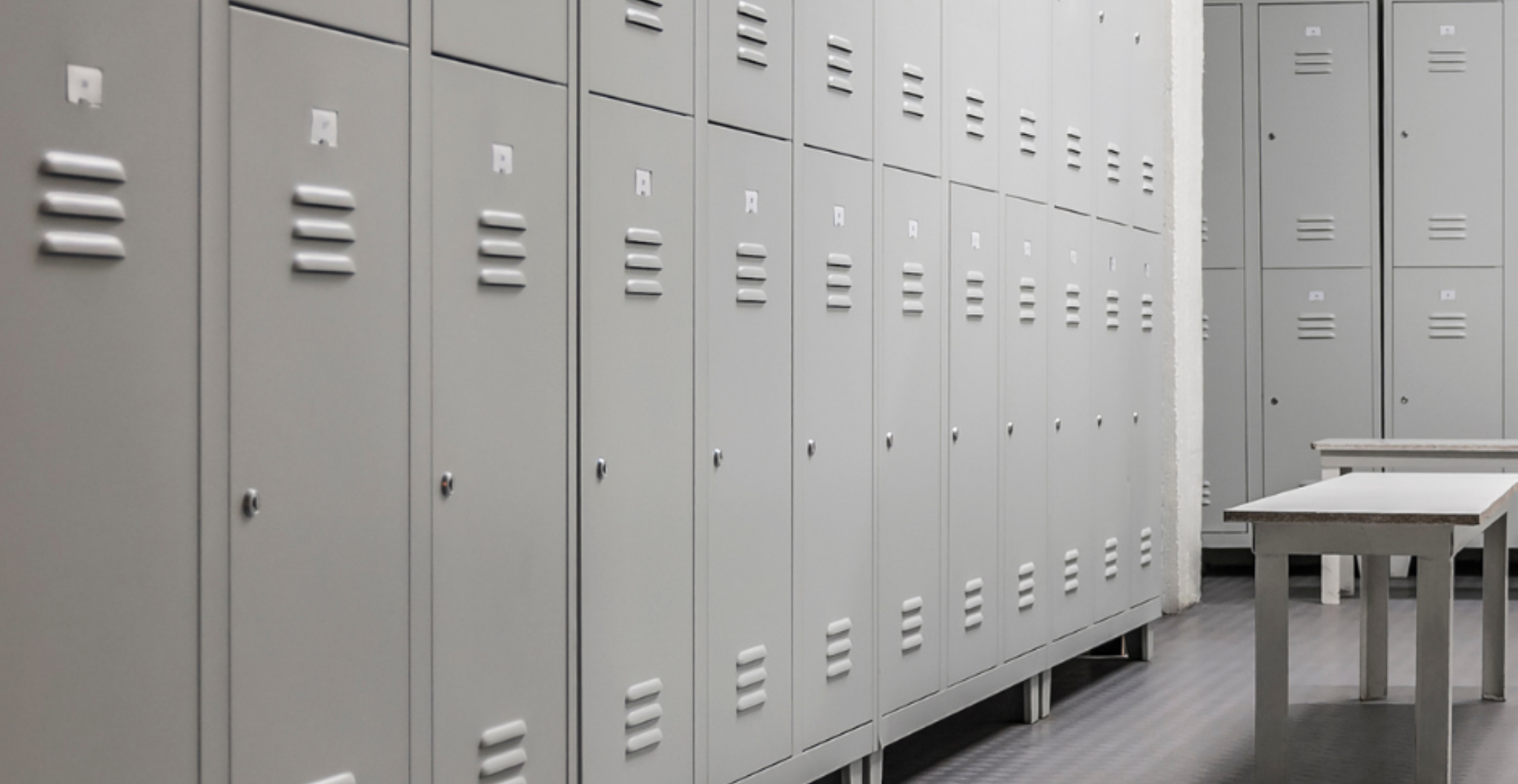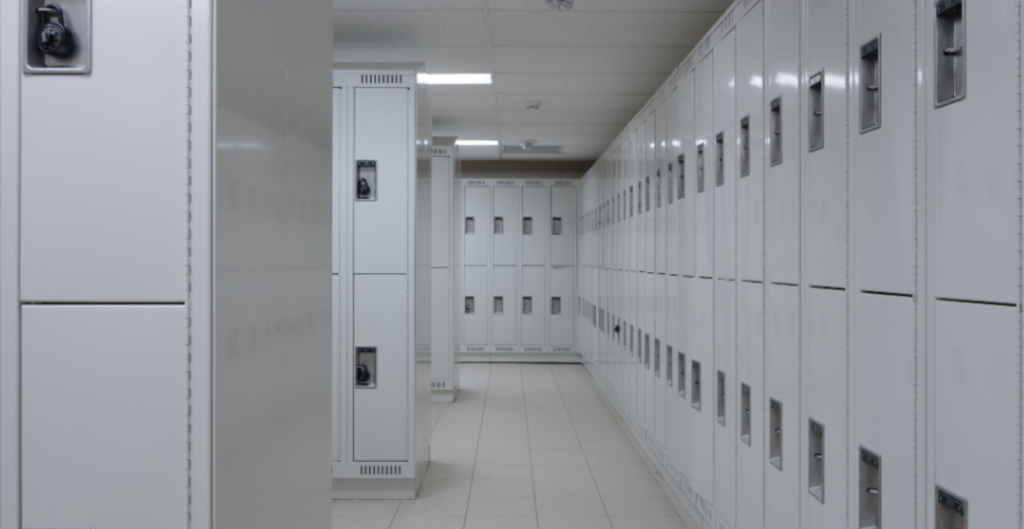Killing Germs In Locker Rooms With Chlorine Dioxide

Chlorine dioxide (ClO2) is an effective disinfectant that can be used to sanitize locker rooms and other fitness areas. It has a broad spectrum of activity against bacteria and viruses, making it a great choice for killing germs in these areas. Furthermore, its low toxicity levels to humans make ClO2 safe indoors with minimal risk of irritation or allergic reactions.
The effectiveness of ClO2 in killing germs has been well documented by the National Institutes of Health (NIH). In a study by NIH, chlorine dioxide was found to be more efficient than chlorine bleach at controlling microbial contamination on hospital surfaces. (1) Additionally, research suggests that it may also be effective against certain types of antibiotic-resistant bacteria like Methicillin-resistant Staphylococcus aureus (MRSA), which can cause serious infections in immuno-compromised or otherwise weak

As any locker room owner knows, the bacteria and germs that lurk on the equipment and surfaces can be detrimental to the health of their members. Chlorine dioxide is an effective way to kill germ-causing pathogens quickly and efficiently. The active ingredient in chlorine dioxide acts as a powerful oxidant that breaks down molecules on contact, destroying harmful organisms without leaving any residue.
To clean locker rooms, chlorine dioxide can be applied directly to surfaces or added to the air. The molecule breaks down on contact with germs and bacteria, preventing them from reproducing and causing further harm. The process is also fast-acting, so you won’t have to wait long to see results. Furthermore, chlorine dioxide leaves no odors or residue, making it a safe choice for locker rooms and other sensitive environments.
By applying chlorine dioxide to areas like benches, lockers, walls, shower tiles, and other hard surfaces throughout the locker room, you will be able to eliminate more germs than conventional cleaning products in much less time. Additionally, chlorine dioxide has no added fragrances or dyes, so there won’t be an unpleasant smell lingering after sanitizing. Chlorine dioxide is the best choice for locker room sanitization to ensure a safe and healthy environment.
ClO2 Is Also Highly Effective At Killing Odors And Other Airborne Contaminants.
While it has been used in the past for deodorizing, its germicidal action makes it ideal for use in locker rooms where many people are changing clothes and using the same space daily. ClO2 will not only be able to eliminate bad smells caused by sweat and bacteria but also kill any germs that these persons may have brought with them into the locker room.
This disinfectant can be applied as a gas, liquid, or solid and can disinfect various surfaces, including walls and floors. It is particularly effective on hard surfaces such as doorknobs, railings, benches, and other equipment. As a bonus, it can also be used for the rapid disinfection of
ClO2 has been approved by the Environmental Protection Agency (EPA) under the Group U Chemicals Classification System as not being classified as a human carcinogen. The EPA has also stated that ClO2 does not cause significant environmental harm when applied according to application guidelines.

Regarding safety in the gym environment, studies have shown that chlorine dioxide gas can evaporate quickly while still providing substantial antimicrobial activity against bacteria. This ensures that any potential irritants created by the gas will dissipate quickly and not remain in the air for a prolonged period. Furthermore, research has shown that ClO2 is more effective than other disinfectants like quaternary ammonium compounds (QACs) when killing bacteria.
Chlorine dioxide is an effective disinfectant and deodorizer that can safely keep locker rooms clean and sanitary. It is fast-acting, long-lasting, and EPA-approved as non-toxic to humans. Therefore, it can be relied upon to ensure a safe and healthy environment for gym members to enjoy their workouts without worrying about contamination from germs or bad odors.
SANITIZER, DISINFECTANT, AND DEODORIZER. COMMERCIAL, OR PRIVATE LOCKER FACILITIES.
Use for public access, residential application, professional facilities, including HVAC, filters, air ducts, ventilation, motor vehicles, and other locker room applications. Each gallon will treat approximately 1,000 – 1,500 sq. ft. of surface. Prepare activated solution to a strength consistent with the maximum threshold for use as a commercial fogging agent, mechanical coarse, hand pump, surfaces in medical facilities, where a powerful biocide is needed, to remove airborne pathogens, for water damage and mold remediation on porous, and NON-porous surfaces including concrete, asphalt, (sub)floor, carpet, turf, vanities, and other amenities.
| Use-Site | CONCENTRATION | Mix EQUAL PARTS 1:1 – NaClO2 (Part A) and HCl (Part B) |
| Recirculating Water Systems Initial Dose (slug dose) | Light – 0.25 PPM Moderate – 1 PPM Heavy – 5 PPM | 1 drop A, with 1 drop B in 4 gallons of water 1 drop A, with 1 drop B in 1 gallon of water 5 drops A, with 5 drops B in 1 gallon of water |
| Porous and Non-Porous Surfaces | Light – 100 PPM Moderate – 200 PPM Heavy – 500 PPM | 100 drops A, with 100 drops B in 1 gallon of water. (4ml = 100 drops) 200 drops A, with 200 drops B in 1 gallon of water. (8ml = 200 drops) 500 drops A, with 500 drops B in 1 gallon of water. (20ml = 500 drops) |
Mix recommended strength in the corner of a designated plastic mixing container. Let the solution activate for 1 minute before dilution, then fill with water. Agitate until mixed. Use as a solution in a manner consistent with usual standards. Soak all biohazards. People use fogging as an adjunct to acceptable manual cleaning and disinfecting for room and environmental surfaces. During fogging treatments, people must vacate the premises; a one-hour restricted entry interval (REI) is required. When fogging, VeriSan™ proper respiratory and ventilation protection must be worn. NIOSH / MSHA approved respirator with an Organic Vapor / Acid Gas Cartridge. Secure proper respiratory and eye wear protection prior to activation.
- SPRAY /FOG – allow visible wetness for 5 minutes before drying.
- MOP – allow visible wetness for 5 minutes before drying.
- SWAB / SPONGE – allow visible wetness for 5 minutes before drying.
- DIP / RINSE – allow to drench or submerge for 1 minute.
REFERENCES.
- Efficacy of Chlorine Dioxide as a Gas and in Solution in the Inactivation of two Trichothecene Mycotoxins.. S. C. Wilson, International Journal Of Toxicology. May 2005.
- Protective Effect Of Low-Concentration Chlorine Dioxide Gas Against Influenza A Virus Infection, 89, 60–67. Journal Of General Virology. Norio Ogata. Jan. 2008.
- Chlorine Dioxide on the Disinfection Student Health Centers of the Indoor Environment in the Elevator. National Center for Biotechnology Information. Ching-Shan Hsu, April 2011.
- Inhibition of Hyphal Growth of the Fungus Alternaria Alternata by Chlorine Dioxide Gas at Very Low Concentrations, 127(4):773-7. Japanese. Morino H. April 2007.
- Mechanisms of Inactivation of Poliovirus by Chlorine Dioxide and Iodine. P. 1064-1071. National Center for Biotechnology. Maria E. Alvarez, A. 1982.
- Disinfection of Football Protective Equipment Using Chlorine Dioxide Produced By The Ica Trinova System. BMC Public Health. Anthony L Newsome, John D Dubois. 2009.



